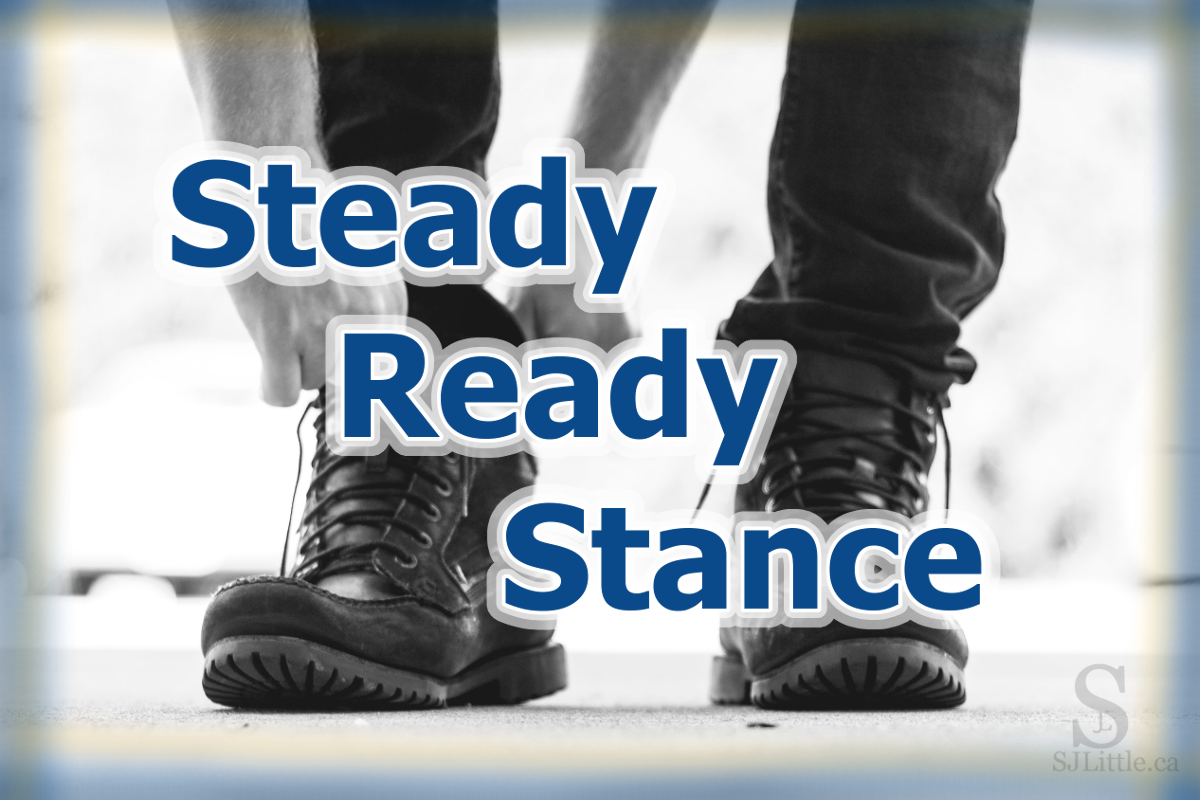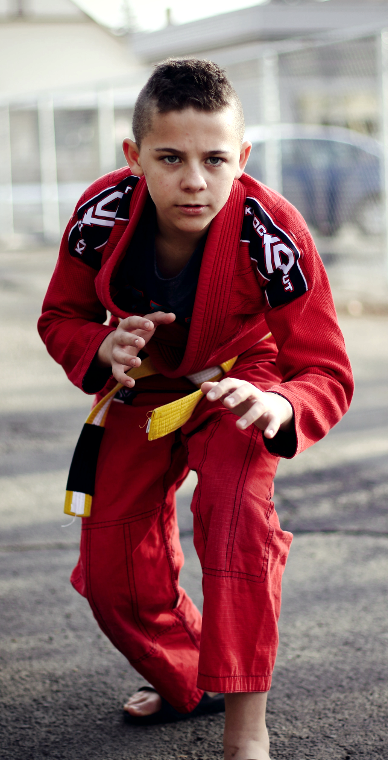
How we stand is important. Nearly every sport has a specific ready stance – a way of standing that improves performance. Many other activities also benefit from having a steady stance. What about my walk with God? Am I standing in a steady ready stance?
Recently, as I watered the plants on my windowsills, I found myself thinking about stance. I have plants on four different windowsills in my house. As I watered them this time, I didn’t spill when watering the plants on three of the windows. On the fourth window, however, I accidentally poured some of the water onto the windowsill… again. As I wiped the spilled drops with a towel, I asked myself why it was that the plants on this particular windowsill seem to be the only ones that, when watering, I frequently spill.
The flower pots on the fourth window are identical to the flower pots on the other windows. Therefore, the type of flower pot couldn’t be the problem. I was using the same container to water them and the container was filled to a comparable level as when I watered the other plants. So what was the difference?
Then it dawned on me. My stance was different. The angle at which I approached the flower pots on the fourth window was different from the other three windows. I didn’t have a clear path to the fourth window, so my stance was unusual. My stance wasn’t steady. It forced my arm to a weird angle as I attempted to pour water into the pots.
Once I cleared the path to the windowsill, enabling a better stance, I had less problem with spilling as I watered.
This got me thinking about how important good stances are.
Growing up, I played ringette for many years. (If you don’t know what ringette is, picture ice hockey and you’ll be close.) Early on, they taught us the ready stance. The ready stance involved keeping knees bent and hands on the ringette stick poised for action.
(For those unfamiliar with this ready stance – often refered to as the “hockey stance” – here’s a quick video example.)
From this stance, it is easy to skate toward the action with a burst of speed. If, on the other hand, I were to stand tall and cross my arms while I waited for the action to start, I would be caught off balance. I would likely stumble and fall. Even if I didn’t fall, I would lose valuable seconds as my opponent got to the ring first. Elite ringette or hockey players will frequently be spotted in the ready stance.

Then I began playing goalie for my ringette team. Again there was a ready stance, but this one was different. The ready stance for goalies involves keeping the blade of the goalie stick flat on the ice, and their legs ready to go down in a butterfly at a moment’s notice. Despite the difference in this particular stance, the same principles apply. The goal of the ready stance is to be able to jump into action at the blink of an eye without being caught off balance or flat-footed.
Think of martial arts or volleyball or basketball or track and field. They all have ready stances specific to the needs of the sport.
Other activities also benefit from having a good stance.
When walking on ice, having a steady stance is important. Those experienced with walking in icy conditions learn tricks in how to move their feet and legs that help them stay upright. When climbing a ladder, using a good stance keeps the person from falling or toppling the ladder. When lifting a heavy box, using the right stance protects the person from back injuries.
Stance is important in many areas of life. Stance is also important in my walk with the Lord.
The Bible talks about a steady ready stance from which to approach life. This stance is especially helpful when life gets tricky.
What is that stance? Well, first off, much of the Bible is filled with instructions and examples of what my stance ought to be (or ought not to be). Therefore, if I want to understand the full picture of the stance God desires for me to have, I must be reading the Bible – the whole Bible – regularly.
However, to keep this post short, I will focus on two aspects of the Christian stance: faith and readiness.
2 Corinthians 5:7 reminds us that: “we walk by faith, not by sight.”
What is faith? Taking God at His Word. To walk in faith is to trust and obey God. Faith gives steadiness to our stance. (For examples of what faith looks like, read Hebrews 11.)
The second aspect of my stance ought to be a readiness.
“Always be ready to give a defense to anyone who asks you for a reason for the hope that is in you. However, do this with gentleness and respect, keeping your conscience clear…” (1 Peter 3:15b-16a HCSB)
My stance is to be a ready stance – ready to explain what I believe.
What does this look like? Many examples exist in the book of Acts of godly individuals using the opportunities they had to share about Jesus.
Truth be told, my stance is not always one of readiness and faith. How can I change that? By being intentional to know God and His Word.
We are told that the Bible is “able to give you wisdom for salvation through faith in Christ Jesus. All Scripture is inspired by God and is profitable for teaching, for rebuking, for correcting, for training in righteousness, so that the man of God may be complete, equipped for every good work.” (2 Timothy 3:15b-17 HCSB)
Keep in mind that the Christian stance is not just about head knowledge. The closer I am walking with God, living according to His Word, the more my stance will be one of faith and readiness.
So how is my stance doing? Have I stopped to consider it recently, or am I too caught up in the busyness of life? Am I off-balance and flat-footed? Or am I steady and ready for action, walking close with my Lord?

